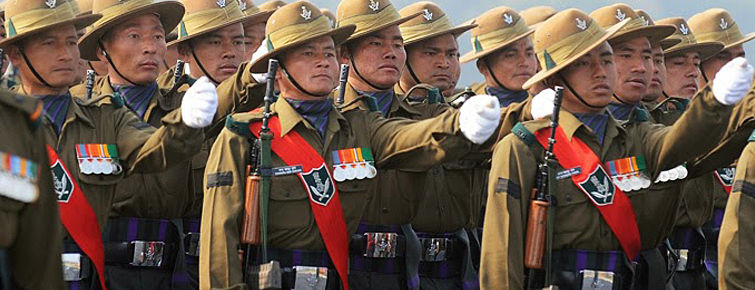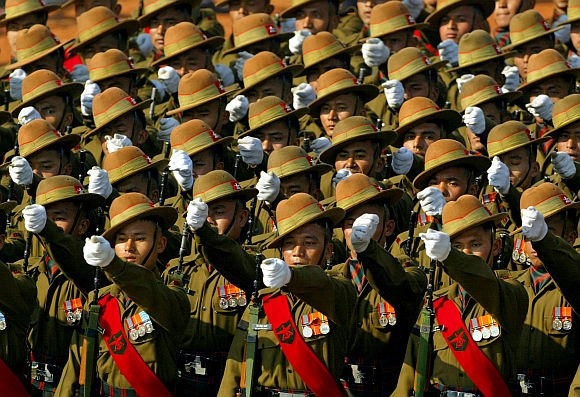How some blue blooded Gorkhas gave Shillong its first Durga Puja
- Arijit Bose
- Sep 29, 2017
- 2 min read

The Gorkhas are known for their finesse as warriors and when it comes to the Gorkha regiment they have a strong connect with Durga Puja.
At one of the ancient Durga temples in eastern India — also considered a Shakti Peetha at Nartiang in the Jaintia Hills, the first ever Durga Puja was initiated by the Gorkha Regiment in Shillong way back in 1864.
The Gorkha regiment jawans initiated the tradition of worshipping Goddess Durga on the ground behind Bara Bazar. What started off as a worship of earthen pots has now turned into a massive extravaganza.
While Gorkhas traditionally do not believe in the concept of idol worship, they continued worshipping the revered deity till 1942.
This in many ways is considered the genesis of the Durga Puja in Shillong.
Worship of weapons, including the traditional Gorkha khukri and dao is an integral part of puja.

Source Google
The special offering to the goddess is referred to as ‘pancha bali’, involving five different kinds of sacrifice, which include bananas, pumpkins, ducks, male goats and buffaloes.
The ‘phool pati’ ritual of the ghot, symbolizing the goddess being brought in a ceremonial procession to the mandap or altar is a spectacle for the eyes to behold. Marble idols are now part of the annual affair at the Gorkha Puja festivities.
The first ‘sarbojonin’ or community Durga Puja was organized by the Sanatan Dharma Sabha, the present day Hari Sabha at Laban in the city in 1896.
It is believed that bringing the idol itself is a tideous process given the missing motorable roads.
For the Northeast, unlike Bengal the Durga Puja is about marking the end of a karmic cycle, and starting life afresh.
But the rituals of Bengal are followed to the T in the Northeast. From Bhog to sindoor Khela and artistic brilliance to the basic fanfare revolving around the extravaganza.

Source – Net
In Bengal, the Durga Puja celebrations began as a means to feed villagers during famine and bring them together. Later, from a social status symbol it transformed into a community ritual.
The month of autumn when Durga Puja happens is when tribes called truce on the war front and concentrate on the tribal life, much like nature that sets to start again.
Durga Puja is celebrated every year in the Hindu month of Ashwin (September-October) and commemorates Prince Rama’s invocation of the goddess before fighting demon king Ravana.
It was Rama, who first worshipped ‘Mahishasura Mardini’ Durga by offering 108 blue lotuses and lighting 108 lamps, at this time of the year.
The first grand worship of Goddess Durga in recorded history is said to have been celebrated in the late 1500s. Landlords, or zamindar, of Dinajpur and Malda initiated the first Durga Puja in Bengal.
The origin of the community puja can be credited to the twelve friends of Guptipara in Hoogly,
Comments